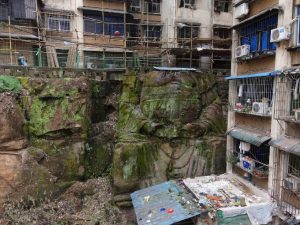
Like some of you, I caught a case of COVID-19 last winter. It felt like a bad cold and I was happy to return to my routine after a week. About a month later, I started experiencing weird symptoms: my leg muscles were so sore I could hardly walk; I couldn’t concentrate or think clearly; my eyes hurt; and I was bone tired from morning to night, which made working a challenge. I didn’t know what was going on with my body and felt concerned about the direction of my health. My doctor had me undergo numerous tests, all of which turned up within the normal range. He finally diagnosed me with long COVID and sent me on my way without treatment.
But I needed something. My brain was fuzzy from morning to night, and one weird symptom after another appeared and dissolved. Having dealt with chronic fatigue syndrome (CFS) for 30 years prior, I was familiar with the challenge of walking around with an undiagnosed fuzzy brain. During those 30 years of CFS I dragged myself through a meditation practice that had begun 20 years beforehand, starting with vipassana meditation and moving on to the Chan practice of Silent Illumination. It was difficult and frustrating to sit down in meditation without clear mental focus. Surprisingly, and thankfully, the practice of silent illumination opened up the possibility of meditating even with a funky, out-of-focus brain.
The change that made it possible to meditate through the brain fog was my understanding of the word samadhi. The unfortunate thing about translating spiritual terms into another language is the likelihood of losing the subtlety and nuance behind each word. When the word samadhi was first translated into English, the translator chose the word concentration. In English, the word concentration implies trying, even forcing oneself to stay with just one thing. This unfortunate choice of words has led to much confusion about the purpose and process of meditation in the West. People who are not well versed in the subtleties of meditation hear the word concentration and try hard to eliminate all thought. They are inevitably discouraged saying, “I can’t stop my thoughts, so I can’t meditate.” And that’s the end of their practice. Many a would-be meditator has been discouraged from the practice because of the implications of the word concentration. That’s how powerful words are! It took me decades to understand how to create a wide-open field in which all thoughts, sensations, and feelings could arise and dissolve into the untouched vastness. Now when I teach meditation, I use the word “listening” or “presence” instead of concentration.
This question of using the right words to describe meditation becomes even more essential when we are dealing with challenges such as long COVID. We may not be able to concentrate, but if we allow all thoughts, sensations, and feelings to arise in a vast, non-judgmental space it becomes possible to meditate, even with a fuzzy brain. The fuzziness rests in the vastness along with the joy, anger, and confusion, the to-do list, loneliness, and all other creations and reactions of the mind. We are aware of the fuzzy contour of our mental state just as we are aware of everything else that arises while practicing vipassana. Fuzzy brain becomes just one more thing to observe, like an itch or a memory. This is great news for those of us who have long COVID or other health challenges. In meditation, we have the opportunity to accept whatever state of mind arises and let it rest in the vastness.
How fortunate that we who have a chronic condition need not be deprived of this brilliant tool that the Buddha left us. The health benefits from this form of meditation are considerable. Health challenges such as long COVID play havoc with our nervous system. While meditating, our beleaguered nervous system has an opportunity to calm down. Obsessive thoughts and fears born of shifting body symptoms that arise, dissolve into the present moment instead of growing louder in the echo chamber of our consciousness. Anxiety becomes just another passing sensation. Since we don’t follow the anxiety blindly, it slowly dissolves for lack of attention. We can finally rest. Body and mind settle down and the body begins to repair itself.
Trying to force the mind to focus is fruitless. There needs to be a delicate balance between commitment and surrender. These days, when I have the rare occasion of a clear mind, I hop to it and get to work. When my mind is unable to focus, rather than fight it and create more damage, I lie on the couch and watch videos or listen to podcasts until the fog lifts. I don’t get as much done as I used to, but the work is deeper and more nuanced. Being present requires a letting go of expectations based on former abilities. Who am I now, in this moment? What am I capable of today? As I go about my day I may go too far one way or another, but the goal is clear—do as much as I can for as long as I can while enjoying whatever is there in the moment to enjoy. Long COVID wakes us up to the precarious situation of being alive. We learn to live in a state of not-knowing from moment to moment. It also wakes us up to the preciousness of life. Each moment of clarity is a moment to connect, to awaken.
See more
Related features from BDG
What Plants Can Teach Us about Living During a Pandemic
Taking Refuge












